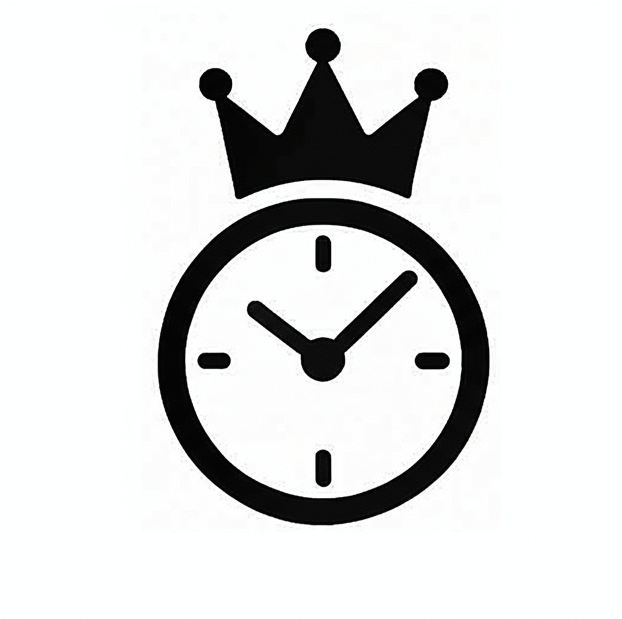Staying the Course: How I Kept Going When My Portfolio Dropped 50%
Most people love investing until the market crashes.
That’s when the real test begins.
In my journey to financial independence, I’ve seen my portfolio rise steadily over the years. But I’ve also faced brutal sell-offs that tested my conviction. Each time, I had to choose: panic or stay the course.
I chose to stay and that decision made all the difference.
The Wisdom That Anchors Me
Whenever markets turn red and panic sets in, I find strength in this quote from the late Charlie Munger:
“If you’re not willing to react with equanimity to a market price decline of 50% two or three times a century, you’re not fit to be a common shareholder and you deserve the mediocre result you’re going to get.”
This isn’t just a clever quote to me, it’s a mindset that has helped me ride through fear, uncertainty, and doubt.
When the World Stopped Turning
I’ll never forget March 2020. COVID-19 swept the globe, borders shut, economies froze, and fear dominated headlines. The stock market plummeted.
Within weeks, my dividend portfolio lost 50% of its value.
Imagine building something over years, brick by brick, and watching half of it disappear in a matter of days. It was gut-wrenching. No one knew how long the crisis would last, or if the world economy would ever recover. The temptation to sell and “cut losses” was real.
But instead of selling, I leaned on discipline. I kept showing up, kept reading, and kept buying.
Why I Didn’t Sell
Here’s the thing: I didn’t stop believing in the businesses I owned.
I had built my portfolio based on timeless principles: strong cash flow, resilient business models, and dividends backed by fundamentals. The companies didn’t suddenly become worthless. If anything, they were now available at bargain prices.
Yes, earnings projections were down. Dividends in some sectors were under review. But I trusted that over the long run, high-quality companies would survive and eventually thrive.
So I looked past the fear, held on to my long-term view, and saw the crash as an opportunity.
The Power of Reframing: Crisis as Opportunity
I’m not saying it was easy. Emotionally, it’s never easy to buy while others are selling. But each time I faced a market downturn, I got better at handling it. And with each experience, I came out stronger and more confident.
When prices dropped in 2020, I took a deep breath and reallocated cash to companies I already knew well, businesses I believed in. My guiding rule was simple: If I liked the company at $80, why wouldn’t I love it at $50, or even at $32?
Those purchases, made during the depths of the crisis, turned out to be some of the best decisions I’ve ever made.
Building Mental Resilience as an Investor
Here are a few mindset habits that helped me stay calm and rational when things got rough:
- Zoom Out
In the moment, a 30% or 50% drop feels catastrophic. But look at any long-term market chart, and these dips look like speed bumps in a decades-long journey. Reminding myself of this helped me avoid emotional decisions.
- Focus on Income, Not Just Price
As a dividend investor, I prioritize cash flow over paper value. Even when stock prices were down, many of my holdings continued to pay dividends. That steady stream of passive income reassured me that the portfolio was still working, even in chaos.
- Avoid Watching the News 24/7
During downturns, headlines thrive on fear. I limit my exposure. Instead of panicking over every market tick, I focus on fundamentals and business updates. Fear sells, but fundamentals win.
- Learn from Every Downturn
Every crisis teaches us something. In 2020, I learned that resilience isn’t just about financial buffers, it’s about emotional discipline. I became more confident in my system, and less likely to react based on headlines.
The Reward of Patience
By mid to late 2021, the world gradually recovered. Markets bounced back. Many of the stocks I bought at deep discounts doubled. Dividends resumed, and in some cases, even increased.
Looking back, I realize that my best gains didn’t come from timing the market, but from enduring it.
More importantly, I emerged from that crash with a stronger mindset. I proved to myself that I could handle volatility, and even use it to my advantage.
Staying the Course: A Shareholder’s Superpower
Markets will always fluctuate. There will be more crashes in the future, maybe even worse than what we’ve seen before. But I’m no longer afraid of them.
In fact, I now view downturns as normal, even necessary, parts of the investing cycle. They cleanse excesses, reset valuations, and reward those who stay calm and disciplined.
I’m not special. I’m just a regular investor who followed a plan, stuck to quality, and chose patience over panic.
And that choice, over and over again, helped me achieve financial independence.
Final Thoughts
If you’re investing for the long term, prepare your mind as much as your portfolio. Volatility is inevitable, but panic is optional.
Build a portfolio of businesses you trust, keep some cash on the sidelines, and when the storm hits – stay the course and buy more if you can; especially when the businesses are undervalued.
It might just be the best decision you ever make.
Like what you see? Share it!
Discover more from BOSS OF MY TIME (BOMT)
Subscribe to get the latest posts sent to your email.
